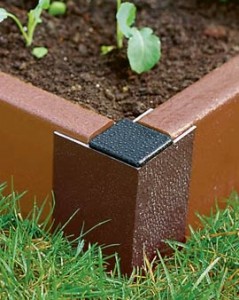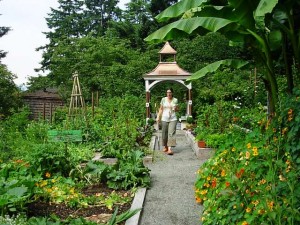
Kathy Fries, framed by her new gazebo
Most gazebos are a little twee for my liking. If you think of a traditional white latticework structure, the kind that looks as if a gust of wind or a swiftly-kicked soccer ball might knock it over, you probably don’t love gazebos either.
Ever since I started scouting great garden architecture for Stylish Sheds and Elegant Hideaways several years ago, I have changed my tune.
Case in point: When I was in Seattle earlier this summer, my friend Kathy Fries invited me to see her new copper-roofed gazebo. Situated in the heart of Kathy’s prolific vegetable garden, the structure was built by John Akers. I’ve written about Kathy and John’s collaboration before, both in this blog and in the pages of Stylish Sheds. He is a salvage-artist-carpenter who knows how to take Kathy’s grand ideas and construct them into fanciful garden buildings.
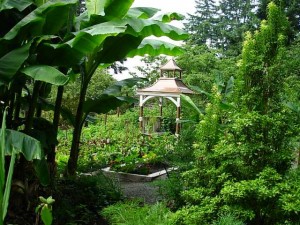
It's a lovely addition that enhances the vegetable garden
What I love about Kathy’s new gazebo is that it is both beautiful and functional (not to mention sturdy!). In it, you can gain shelter from rain or sunshine; you can pause while picking raspberries and sit on one of two facing interior benches. You can “gaze out” over the garden, looking through openings on either end or the side walls.
The gazebo’s charming rooftop joins several other turrets, cupolas and domes that populate the skyline of Kathy’s garden. Plus, it gives the vegetable garden a new point of view. When John erected the gazebo, it allowed Kathy to realign some of her paths and planting beds on a main axis. It’s beautiful and I know everyone who sees it will start dreaming about a new sort of garden gazebo.
And did you know that Gazebo is believed to come from the Latin for “Gaze About”? I’ve added definitions from several sources to my Shed Glossary, here.
If you have a Gazebo you want to share, please send me the photo and I’ll post it in the future. Here are a few more photos from Kathy’s garden:
- The potager attracts wildlife, like this little songbird on the top of a tuteur
- Kathy Fries, “shedista” and gardener extraordinaire; her new gazebo is seen on the left
- Another touch of whimsy: a giant peapod sculpture in the pea patch










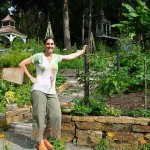

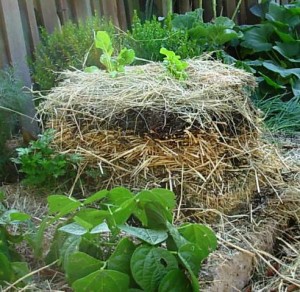
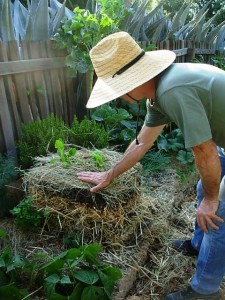
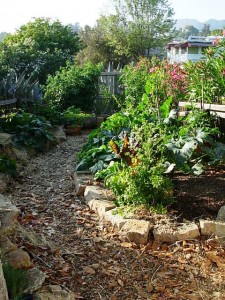
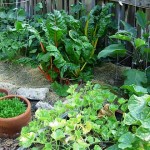 As I’ve mentioned here before, some people learn by reading or doing, but I tend to learn by writing about something. I fall in love with each tree or flower I find myself writing about. I become fascinated with a style, a material, a project as I craft the narrative piece that will be published and read by others.
As I’ve mentioned here before, some people learn by reading or doing, but I tend to learn by writing about something. I fall in love with each tree or flower I find myself writing about. I become fascinated with a style, a material, a project as I craft the narrative piece that will be published and read by others. 